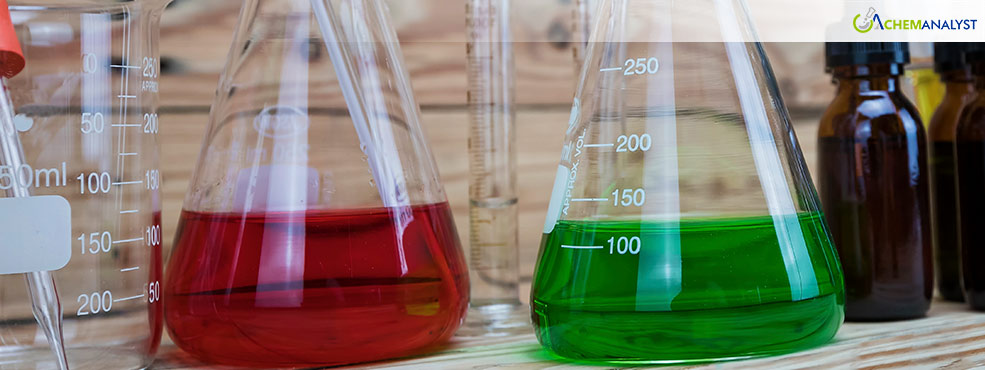Welcome To ChemAnalyst

As the year ends, the Glycol Ether market in North America continues to show a bullish trend. Glycol Ether price hikes have been consistently observed throughout December, reflecting strong demand across various industries. The U.S. personal care sector has particularly contributed to this, with steady demand for Glycol Ether driven by the growing need for humectants in cosmetics production. E-commerce sales in the U.S. personal care sector surged 14.6% year-over-year during Black Friday 2024, highlighting strong seasonal demand and consumers' increasing preference for online shopping.
On December 19, 2024, Dow Chemicals announced a price increase of USD 0.05 per pound (or USD 110.23 per metric ton) for several of its Glycol Ether grades in North America, which would be in effect from January 6, 2025. This price adjustment will affect key Glycol Ether solvents used across multiple industries, including Butyl Cellosolve Solvent (EB) (Ethylene Glycol Butyl Ether), Butyl Carbitol Solvent (DB) (Diethylene Glycol Butyl Ether), and Butoxytriglycol (BTG) (Tripropylene Glycol Monobutyl Ether).
Among the affected products is Butyl Cellosolve Solvent (EB), also known as Ethylene Glycol Butyl Ether (EGBE). This solvent is widely used in paints, coatings, and cleaning products, and serves in industrial and household cleaners, adhesives, and inks.
Another product seeing a price hike is Butyl Carbitol Solvent (DB), also known as Diethylene Glycol Butyl Ether (DEGBE). Known for improving film formation, flow, and leveling properties, it is essential in paints, coatings, lacquers, and is used in the production of inks and printing materials.
Lastly, Butoxytriglycol (BTG), or Tripropylene Glycol Monobutyl Ether, is also affected. This solvent enhances flow, leveling, and film formation in paints, coatings, and lacquers, making it valuable across a variety of industrial applications. It helps improve the application properties such as flow, leveling, and film formation.
At the same time, Glycol Ether production remained stable in November, with steady export prices despite increased energy costs. The rise in feedstock Ethylene Oxide prices, driven by Mono Ethylene Glycol demand for automotive antifreeze, provided additional cost support. Meanwhile, the energy cost index rose by 0.2% over the month, further impacting production costs. Supply rates of Glycol Ether are expected to remain constrained during peak winter, and market players are likely to raise their quotations due to the low availability of supplies and rising production costs.
Looking ahead, Glycol Ether orders are expected to rise, with steady off-takes anticipated from cosmetics manufacturers and further demand growth in the FMCG sector. This uptick in demand is expected to strengthen Glycol Ether's market outlook.
In conclusion, Dow Chemicals' price increase for Glycol Ether grades reflects rising production costs driven by higher energy prices and increased demand for feedstocks like Ethylene Oxide. With supply constraints expected during peak winter, the decision aligns with market conditions, ensuring stability amid growing demand from sectors like personal care and FMCG.
We use cookies to deliver the best possible experience on our website. To learn more, visit our Privacy Policy. By continuing to use this site or by closing this box, you consent to our use of cookies. More info.
